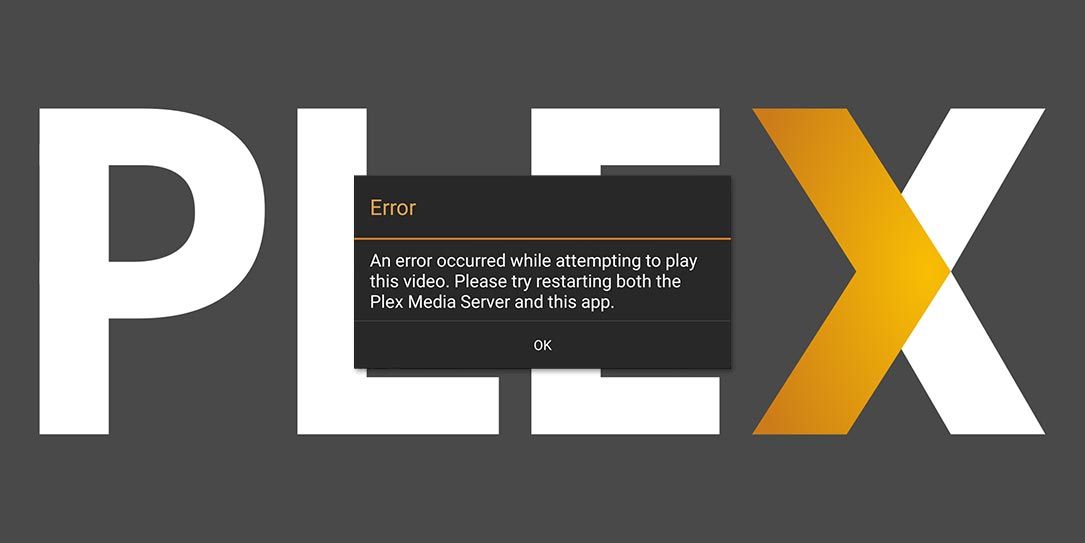Plex is a popular media server and streaming platform that allows users to organize and access their media files from various devices. However, like any software, Plex is not immune to technical issues, and users may encounter playback errors while trying to enjoy their favorite movies, TV shows, or music. These playback errors can be frustrating, but fear not! In this comprehensive guide, we will explore the common causes of Plex playback errors and provide you with practical solutions to resolve them. So, let’s dive in and troubleshoot those pesky Plex playback errors together!
Understanding Plex Playback Errors
Plex playback errors refer to the issues encountered when playing media content through the Plex Media Server or the Plex app. These errors can manifest in various forms, such as “An error occurred trying to play the video,” “Conversion failed,” or “Playback Error. An error occurred loading items to play.” These errors can be attributed to a range of factors, including network failures, incompatible media files, corrupted databases, or insufficient server resources.
Common Causes of Plex Playback Errors
Before we dive into the solutions, let’s take a closer look at the common causes behind Plex playback errors. Understanding the root causes can help us troubleshoot and fix these errors more effectively. Here are some of the common causes of Plex playback errors:
- Network Issues: Slow or unstable internet connections, network congestion, or firewall restrictions can disrupt the streaming process and result in playback errors.
- Incompatible Media Files: Plex may encounter difficulties playing certain media files due to unsupported formats, missing codecs, or corrupt files.
- Insufficient Server Resources: Plex’s transcoding process requires sufficient server resources to convert media files on-the-fly. Insufficient CPU power or limited transcoding capabilities can lead to playback errors.
- Corrupted Plex Database: Over time, the Plex database can become corrupted or fragmented, leading to playback errors. These errors may occur when accessing the database or retrieving metadata for media files.
- Outdated Plex Media Server or App: Using outdated versions of Plex Media Server or the Plex app can result in compatibility issues and playback errors.
Now that we have a better understanding of the causes, let’s explore the solutions to fix Plex playback errors.
How to Fix Plex Playback Errors
In this section, we will provide step-by-step solutions to resolve common Plex playback errors. Follow these troubleshooting steps to enjoy uninterrupted media streaming on your Plex server.
1. Update Plex Media Server and App
One of the first steps to resolve Plex playback errors is to ensure that you have the latest version of Plex Media Server and the Plex app installed. Developers often release updates to address bugs, improve performance, and enhance compatibility with various devices. Here’s how to update your Plex Media Server and app:
- Launch the Plex Media Server on your computer.
- Go to the settings menu and navigate to the “Server” section.
- Check for updates and install any available updates for Plex Media Server.
- On your device, open the Plex app.
- Go to the settings menu and look for the option to update the app.
- If an update is available, proceed with the update.
Updating both the server and app ensures that you have the latest features and fixes, reducing the chances of encountering playback errors.
2. Check Network Connection
A stable and reliable network connection is crucial for smooth Plex playback. Here are some steps to troubleshoot network-related issues:
- Check your internet connection speed using an online speed test tool. Ensure that your download and upload speeds meet the recommended requirements for streaming media.
- If your internet speed is slow or unstable, try rebooting your router or modem.
- Consider connecting your device directly to the router using an Ethernet cable for a more stable connection.
- Disable any VPN or proxy services temporarily, as they can interfere with Plex’s network connectivity.
By ensuring a stable and fast network connection, you can minimize the chances of encountering Plex playback errors caused by network issues.
3. Clear Plex Media Server Data
Clearing the Plex Media Server data can resolve certain playback errors caused by corrupted or fragmented databases. Here’s how to clear the Plex Media Server data:
- Close the Plex Media Server and any Plex apps running on your device.
- Open the file explorer on your computer and navigate to the Plex Media Server data folder. The default location is usually “C:\Users\YourUsername\AppData\Local\Plex” (replace “YourUsername” with your actual username).
- In the Plex folder, locate the “Cache” folder and delete it.
- Find the “Transcode” folder in the same directory and delete it as well.
- Restart the Plex Media Server and open the Plex app to check if the playback error persists.
Clearing the cache and transcode folders helps eliminate any corrupted or outdated data that may be causing playback errors.
4. Adjust Video Quality Settings
Sometimes, playback errors in Plex can be caused by incompatible video quality settings. Adjusting the video quality settings can help alleviate these issues. Here’s how to do it:
- Launch the Plex app on your device or web browser.
- Select the media item you want to play from your Plex library.
- During playback, access the settings menu by clicking on the settings icon.
- Look for the “Playback Settings” or “Quality” option.
- Choose the “Original Quality” or adjust the settings to a lower quality option.
- Save the changes and try playing the media again.
By reducing the video quality or using the original quality setting, you can ensure smoother playback and minimize the chances of encountering playback errors.
5. Enable Hardware Acceleration
Enabling hardware acceleration can significantly improve Plex’s transcoding performance, especially when dealing with high-resolution or complex media files. Here’s how to enable hardware acceleration in Plex:
- Open the Plex app or web interface.
- Go to the settings menu and navigate to the “Server” or “Transcoder” section.
- Enable the option to “Show Advanced” settings if necessary.
- Look for the “Use hardware acceleration when available” option and tick the checkbox.
- Save the changes and restart Plex to apply the settings.
Enabling hardware acceleration offloads the transcoding process to your device’s GPU, resulting in faster and more efficient media playback.
6. Repair Corrupted Plex Database
If you suspect that a corrupted Plex database is causing playback errors, you can repair it using SQLLite3. Here’s how to repair the Plex database:
- Download SQLLite3 from sqlite.org and install it on your computer.
- Open the command prompt with administrative access.
- Navigate to the location of the Plex database using the “cd” command. The default location is “C:\Users\YourUsername\AppData\Local\Plex”.
- Run the following commands one by one:
copy com.plexapp.plugins.library.db com.plexapp.plugins.library.db.original
sqlite3 com.plexapp.plugins.library.db "DROP index 'index_title_sort_naturalsort'"
sqlite3 com.plexapp.plugins.library.db "DELETE from schema_migrations where version='20180501000000'"
sqlite3 com.plexapp.plugins.library.db .dump > dump.sql
del com.plexapp.plugins.library.db
sqlite3 com.plexapp.plugins.library.db < dump.sql
These commands will repair the Plex database and resolve any issues related to corrupted metadata or indexing.
Additional Tips and Tricks
Here are some additional tips and tricks to enhance your Plex experience and prevent future playback errors:
- Keep your Plex Media Server and apps up to date to benefit from the latest bug fixes and improvements.
- Regularly optimize and clean your Plex database to maintain its performance.
- Ensure that your media files are in supported formats and codecs to avoid compatibility issues.
- Consider organizing your media library with proper naming conventions and metadata to optimize Plex’s indexing process.
- Join the Plex community forums or support channels to seek assistance from other users and Plex experts.
By following these tips and tricks, you can minimize the chances of encountering playback errors and enjoy a seamless media streaming experience with Plex.
Conclusion
Plex playback errors can be frustrating, but with the right troubleshooting steps and solutions, you can overcome them and enjoy uninterrupted media streaming. In this guide, we’ve explored the common causes of Plex playback errors and provided practical solutions to fix them. Remember to update your Plex Media Server and app, check your network connection, clear Plex Media Server data, adjust video quality settings, enable hardware acceleration, and repair any corrupted databases. By implementing these solutions and following the additional tips, you’ll be able to resolve Plex playback errors and enjoy your media library without interruptions. Happy streaming!
Experiencing difficulties with your Device, check out our “How To” page on how to resolve some of these issues.








